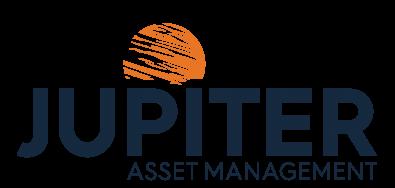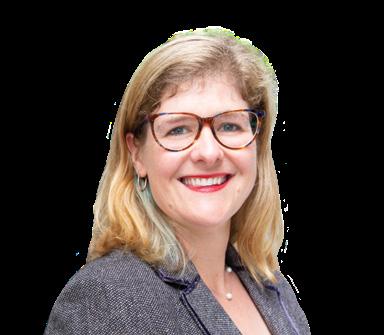TAKING A GLOBAL VIEW ON CLIMATE AND BIODIVERSITY
Climate change has moved to the heart of financial calculations and biodiversity risks are quickly following, while investors strive to unlock financial returns with positive real-world impacts, Rachel Alembakis writes.


Proudly supported by
Roundtable | Thought Leadership Series
Editorial
Rachel Alembakis managing editor
Climate change has moved from being an external consideration of environmental concerns to being at the heart of internal financial calculations by companies and investors.
Accurately pricing climate risks into investment models is now part of the cost of business and if investors can mitigate that risk, there are opportunities for investment return over the medium- and longer-term time horizons.
At the same time, Australian super funds are balancing the need to take climate change into account as part of their fiduciary responsibility to provide long term retirement income for members with legal obligations to meet regulation, such as the Your Future, Your Super performance test.
Held as a luncheon roundtable in Melbourne, this robust panel
discussion covered a breadth of topics including regulation, legislation, carbon pricing, climate disclosure and the risks to climate and ecosystems.
We would like to thank our panellists and our roundtable partner Jupiter Asset Management for their time and the considered analysis they brought to the table.
If this is the first time you’ve come across this publication, FS Sustainability is a weekly digital publication that reports on environmental, social and governance issues that affect how investors and Australian companies manage, disclose, and communicate their material risks and opportunities.
Managing climate risks and taking advantage of the future growth in a lower-carbon world is firmly established high up on the agenda for asset owners and managers.
While biodiversity risks and impacts like water and deforestation are still emerging issues in terms of pricing models and regulation, they are rising considerations for investors and businesses, with governments quickly moving to increase regulation to protect vulnerable ecosystems.
Meanwhile, fundamental concerns like market performance, inflation and geopolitical instability persist, all combining to remind investors that this complex world requires a sophisticated investment strategy to find return for clients and members.
At a recent FS Sustainability roundtable supported by Jupiter Asset Management, industry experts discussed how regulation, legislation, carbon pricing, climate disclosure and the risks to climate and ecosystems interact with economic and geopolitical considerations and ultimately how this shapes global equities strategies.
Investors are choosing to hold the line with climate commitments and are embracing the challenge of evaluating biodiversity impacts and risks, but they are ever mindful of their fiduciary obligations and how their actions demonstrate real world impact in financial return as well as impacts on people and planet.
“Decarbonised” versus “Paris-aligned”
Panellists explored the nuanced differences between zero carbon portfolios and portfolios that are invested in companies that are aligning to achieving net zero by 2050.
For Jupiter Asset Management head of sustainable investing Abbie Llewellyn-Waters, the key is identifying companies in global markets that are positioning themselves to take advantage of the transition in the years to come.
“What we are trying to find is those companies who are absolutely at the forefront,” she said.
“This is a forward transition not a backward looking one.”

“We’re thinking about this in the context - who is better positioned from a carbon pricing mechanism perspective, which we can model internalised climate cost through impact to profitability, cost of capital and competitive positioning, and who is expected to have an advantage of having a decarbonised footprint?”
Identifying those companies means using investment analysts to conduct proper research, said AustralianSuper head of ESG and stewardship investments Andrew Gray.
“This gets back to the analyst doing the work on assessing the degree of alignment,” Gray said.
“For example, we’ve been doing carbon footprint on the portfolio for a long period of time. But increasingly, we’re looking to assess each company’s alignment. It’s not only about the current footprint, or what the company is doing to manage the footprint, it’s, is it aligned to Paris?
“That’s the analyst understanding the business, the decarbonisation pathway, and the role that sector has in the global pathway and I think this just becomes an integral part of analysis.”
Equip Super head of responsible investment Jessie Pettigrew pointed to the way in which the Australian economy, and therefore Australian investors and businesses, are exposed to climate change as intensive emitting entities.

“A lot of our exporters are carbon intensive in a Scope 3 sense and may or may not be contributing to emissions reduction in the country that they’re importing into,” she said.
“We are still having this conversation around our border emissions - our Scope 1 and 2 emissions. We spend all our time on that, and, I feel, very little time on what are the levers that we should be pulling here to support the countries that are taking in all these
1
THE JOURNAL OF ESG INTEGRATION• FS Sustainability www.fssustainability.com.au August | 2023
Thought Leadership Series | Roundtable
Panellists
very carbon intensive products that we produce. We need to better understand our role as responsible investors in these markets.”
No backing away
The super funds at the table have made commitments on decarbonisation both within portfolios and in real world impacts.
“We’ve got a wide ranging ESG program and climate is a big feature of it,” said TelstraSuper head of sustainable investing David Humphreys.



“We adopted a climate change action plan in 2021, and we’re well into implementing that. We’ve recently published our second climate report, and pleasingly, we’re advanced on achieving the targets we set around decarbonising the portfolio.”
“It is a key focus of our board and investment committee moving forward.”
The question of how to inform and engage consumers, clients and fund members on how sustainable investing works was a key point of discussion.
“We have a very active member base, historically, from the universities and other tertiary institutions and research institutes around the country,” said UniSuper head of ESG Lou Capparelli.
“They are very, very focused on matters of ESG, in particular climate. We are trying to navigate a pragmatic path through investing, while also doing the right thing by communities and the environment more generally.”
Llewellyn-Waters reinforced this, pointing out that this a challenge for asset owners across markets, not just in Australia.
“It’s difficult, complex landscape with huge amount of interconnectivity,” Llewellyn-Waters said.
“You cannot solve natural capital and biodiversity loss without solving climate change. The just transition and social equity is a key component of that transition as well.
“To isolate these issues, I think is too binary. Obviously, the in-
dividual investor needs transparency. They need to know that what they’re investing in aligns to real world outcomes.”
Using engagement authentically





Asset owners and managers that consider themselves stewards of capital should be prepared to use the full array of tools including engagement, proxy voting and ultimately divestment.
But how super funds talk about their engagement activities and demonstrate how it aligns with fiduciary duties to act in the longterm best financial interests of members matter to members, clients and now, increasingly, regulators. The Australian Prudential Regulation Authority (APRA) recently updated Prudential Standard SPS 530 Investment Governance to include greater guidance on how funds should demonstrate integration of ESG and the value of stewardship.
APRA said that where super funds engage in stewardship activities as part of prudent management of investments, they expect funds be able to demonstrate how they “contribute to value creation/preservation over different time horizons and support delivering financial returns to beneficiaries,” are “appropriate in the context of the RSE licensee’s business operations, resources and investment mix and complexity,” “are undertaken on a cost-effective basis, including where undertaken by way of a collective approach” and “aligned with publicly disclosed statements on stewardship.”
Gray said that the concept of engagement activities being aligned to delivering investment value to members is “not difficult.”
“Philosophically, we’ve got a strong belief that that is the case, also, where your engagement activities are constructed alongside the investment team, such that they’re very much aligned with the investment piece that you’ve got in the company,” Gray said. “The principle that it’s aligned with value is not challenging.”
But demonstrating that can be challenging, Gray said.
2 FS Sustainability THE JOURNAL OF ESG INTEGRATION•
| 2023
www.fssustainability.com.au August
Andrew Gray AustralianSuper
Abbie LlewellynWaters Jupiter Asset Management
Adrian Hoe Frontier Advisors
Jessie Pettigrew Equip Super
David Humphreys TelstraSuper
Claire Tan Mercer
Shali Lingaretnam VFMC
Lou Capparelli UniSuper
Roundtable | Thought Leadership Series
The quote
“I’d say inevitably, what that means is we need to be more transparent with our engagement.
“One way is to signal upfront what your engagement plan is. And then report back on how you’ve delivered against that plan. I think transparency is an inevitability but I think that’s a good thing.”
Capparelli concurred.
“In our case, about a third of assets would be Aussie equities, and our focus is certainly Aussie-based,” Capparelli said.
“The engagement we have has typically been more ASX-focused, but we are global, and we are across all asset classes, including unlisted.
“We have to be very careful; we engage individually but also collaboratively with other investors. We can say this was the outcome, but we can’t say we individually are responsible for it – our lawyers probably wouldn’t allow us to make that causal link.”
Asset owners are also evaluating their asset managers on their effectiveness in engagement.
“There is a lot more focus on stewardship at the moment,” said Mercer Sustainable Investment consultant Claire Tan.
“With our manager research ratings, there is a lot more focus now on manager level stewardship and their process around engagement. [The fund managers] understand that ESG integration is now the expectation, and those that are highly rated on ESG are able to demonstrate that they have effective stewardship, with milestones, and outcomes driven processes in place.”
Frontier Advisors senior consultant Adrian Hoe agreed.
“Have you got a plan? Can you show action? Can you show outcomes and show elements of your monitoring that are thorough and genuine?” he said.
“It’s increasingly important. It’s a very large part of our process when we assess managers on ESG.”
Divestment is an option for asset owners, but all agreed that it’s a last resort after using other tools. Humphreys noted that while using the tools of engagement, TelstraSuper also reports back to members.



“We publish a six-monthly bulletin that covers our engagement and stewardship activities and key areas of focus,” Humphreys said.
“For select high profile AGM resolutions, we are prepared to disclose our rationale for voting for or against a particular matter such as a climate strategy or director election.”
Pettigrew said Equip Super “expects” its outsourced asset managers would have an escalation strategy if engagement failed with a portfolio company.
“We would absolutely expect our managers to have some escalation strategy, but that will be very different depending on what their strategy is, what position they hold in the portfolio, why we’re holding them,” she said.
The rising importance of biodiversity
Gray noted that much in the way that the Paris Agreement paved the way for a commonly accepted narrative that aligning to net zero by 2050 is the “lowest cost economic outcome,” COP-15 and the development of the TNFD will follow a similar momentum, but the economic case on biodiversity is still being explored.
The economic case on biodiversity has been made strongly by the 2021 Dasgupta review commissioned by the UK government.
“It has been established that over half global GDP is reliant on biodiversity, yet integration into capital markets is nascent” Llewellyn-Waters said. “There are a couple of broad base data points within biodiversity that we have available, for example, water intensity, but we don’t have that for the vast majority of considerations, let alone standardised measurements as well.
However, local constraints such as the impact of Your Future, Your Super and the requirement for super funds to meet the performance benchmark has hindered allocations to natural capital solutions, Tan said.
“One thing that we’ve noticed as a consultant, is that Your Future Your Super has really hindered allocation to natural capital, climate adaptation and mitigation investments, due to the nature of the performance test,” Tan said.
“The majority of asset owners have a 50-60% or more, in some cases, allocation to listed equities, whereas a lot of climate solutions are in the unlisted space – so the regulation has been quite a challenge for Australian investors in this regard.” fs
3
THE JOURNAL OF ESG INTEGRATION• FS Sustainability www.fssustainability.com.au August | 2023
What we are trying to find is those companies who are absolutely at the forefront. This is a forward transition not a backward looking one.
Abbie Llewellyn-Waters















